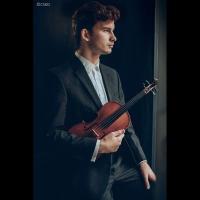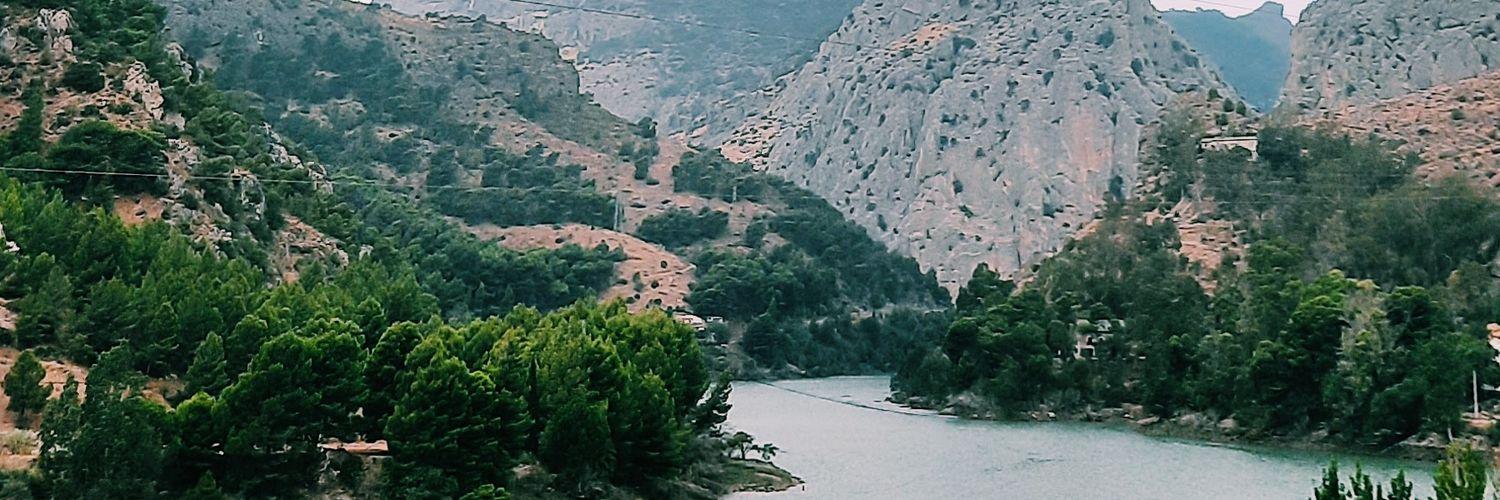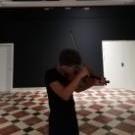-
Posts
38 -
Joined
-
Last visited
-
Days Won
2
Nazariy last won the day on June 11 2024
Nazariy had the most liked content!
About Nazariy

Profile Information
-
Gender
Male
Recent Profile Visitors
828 profile views
Nazariy's Achievements
-
Nazariy started following Bénédiction de Dieu dans la Solitude (Orchestrated) - F. Liszt , Symphonic Prelude , Ukrainian Suite for orchestra and 6 others
-
Today I submit my most recent composition. This time I'll leave the music explain itself. Hope you enjoy it!
-
Today I submit a suite I composed 6 months ago, this is a piece in four movements that was comissioned by Málaga's Promúsica Orchestra as part of a project called "A life in Ukraine", and my task was to portrait four of diferent "stages" of life in my home country. Intrumentation: 2 Flutes, 2 oboes, 2 clarinets, 2 bassoons, 2 horns, choir and strings. The four movements are: birth, party, maturity and death. The first one, birth, is an evocative landscape of the begining of life, from quiet tremolo and solemn fifths. Later on, a simple melody begins and reassures (C) major as the key. After this theres an episode still in the same beginning atmosphere but in a more tense way leading to G minor, this episode introduces a secondary theme that is developed in canon moving to the key of E flat major in which comes the climax of the piece. This climax states the motives of the beginning and the secondary theme in a broad forte passage that finally reaches and relaxes leading to the recapitulation. The recapitulation is quite similar but stays in a stable C major and the piece ends with a small coda in a peaceful strings chord. The second piece, party, is an ukrainian dance (kolomeika) in A minor as recalling the youth times. It alternates different themes in a 'ABACA' form. A is the most typical dance in a modal A minor with augmented seconds and with some satirical and dark comic moments. Sometimes recalles themes from a song 'Chornobryvtsi nasiona maty' mixed with the archetypical kolomeika motif. The B and C sections are trio like episodes that take the music to more relaxed moments, these are both in major keys, C major and F major. B is based in another ukrainian song and C is more like influenced by Dvorak Slavonic Dances. This piece ends with a relaxed coda in A major, but surprisingly a last A-E fifth blast in the last beat of the piece leaves an open sensation from the listening. The third piece is a valse that pictures the melancholy and nostalgy of the young times. Maturity is a piece in a ternary form. The first section starts with a lyric theme in G minor, then follows a repeat, then a B flat major passage for contrast and later on repeats again the main theme. The middle section is relaxed and optimistic based in two folk songs that go through G and D major, the last one follows to the coda of this section as dominant of the main key G minor, leading to the recapitulation. The main theme repeats again once, and the coda then starts with the theme from middle section (G major turned now into the minor) that leads to the most drammatic point that unwraps into simple pizzicati in basses D-G. The last piece, death, is an Elegy in C minor in a free form which starts with an inversion of the secondary theme of the first piece used here as the main theme. This sorrowful melody leads into a transition in which the oboe and the clarinet have rhapsodic solos going from C minor to A flat major and then to E flat major, the relative key. Here the music tries to establish a happy moment with the canon beetween violins and the basson leading to a section in E flat major that the only thing that can do is to fade away and resign into the recapitulation of the main theme. The theme appears again but now with a new countertheme in the violas. The second part of the theme repeats, but suddenly the music is in C major and, not without doubt, leads into a major recapitulation of the beginning of the first piece, that eternal tremolo and fifth in Flute and Oboe. Then a choral in clarinet and bassoon leads the music into the climatic moment of the whole work. The music is stopped and only the octave tremolo in first violins can be heard. Then for first time the voices appear, and they recall a well-known ukrainian song based in Taras Shevchenko poem, "Testament", in which the author asks to be buried in his home country with really powerful words. The voices are accompanied by a really quiet tremolo lines in violins divisi, then imitated by clarinets then by the basses and finally the music reaches the coda. The coda starts with a distressing canonic moment beetween the strings confirming the reaching of the eternal peace in C major. The horn call a final hope motive imitated by the flute and the piece comes to its end in a peaceful and extinguishing C major strings chord. Suite.pdf
-
Hey there! Today I submit my latest work. I'm not composing much lately but I managed to come up with this being somehow a reflection of thinking about the happy moments lately. It has some similarity with that highly expressive Rachmaninov style, that somehow represent for me really well this type of feelings. I hope you like it!
-
Hi, today I upload my most recent work. It's an impromptu in D-flat major in which I tried to recreate some dream-like textures within a late romantic style. I hope you like it! Impromptu.pdf
-
Here I submit my variations (I took it too seriously) Wiegenlied variations.pdf
-
Hey there! Here I upload my two latest fugues. They have less intricacy in some way but the subjects are slightly more complex for the counterpoint, especially in the minor fugue.
-
Today I present an arrangement for orchestra of Brahms Intermezzo op.119 no.1. Hope you like it! 119-1.pdf
- 1 reply
-
- 1
-

-

Poéme for piano (scriabinesque style)
Nazariy replied to Nazariy's topic in Piano Music, Solo Keyboard
Thank you for the comments! @Jqh73o I get your point about 0:53, and still after these few bars the music gets its way to some "scarier" or "sadder" place. All the climax moments for me are mostly deceptive points because it almost never gets to a "certain place" (in terms of tonal triadic harmony), this is why it just fades away or doesn't get too concrete. The only climatic point that looks that is going to get concrete is from 4:00 and yet doesn't get it. Actually, thinking about it, I'm almost always thinking in somewhat "tonal" terms about this music but always being sort of evading tonic. My perception of most of the chords is usually almost functional and just adding extensions and altering chord notes to blurr the efect in the listening. In other moments, in the other hand, the polichords are completely different from this feeling. -
Today I present my most recent work for piano. It's a "poéme" influenced by Scriabin. In about five minutes I tried to experiment with these typical sonorities, chords and textures, which lead myself to really strange paths what made me check few times everything to be sure about what was the intention and direction of every passage of the piece. I noticed that it's really easy (or at least it was for me) to go from central peiod of Scriabin to somewhat around Debussy and weird Jazz. The form of the piece is A-B-C-A, quite traditional way but I intended the themes to really blend beetween themselves and in some parts you can notice that the themes reapear in fragments in other places. (examples: the final motif of b.10 appears in bar b.36 and b.51-53 b.5 motif later in the recapitulation gets really expanded to the climax of the work being mixed with motif from b.19 in b.63-66 b.11 motif is developed into the C theme also I let yourselves to identify motif of the first theme along the piece) This piece was intended to be somewhat like a three mvts. sonata, then two mvts influenced by Scriabin 4, but finally I decided it to be in one being a "poéme". In the picture of the video you can see something near to what this piece suggests me. You are free to imagine from this point whatever it makes you feel and what story does it tell. I hope you like it and wait for your comments. Poème.pdf
-
Violin Concerto III.pdfViolin Concerto II-Violín.pdfViolin Concerto II.pdfViolin Concerto III-Violín.pdf Long time no see! Finally I'm able to answer and I find a moment to do so. First, answering about the Musesounds... I just can't stand solo violin in the new soundfot (excess of gliss especially and all th weird dynamics things) and this is why I just decided to use the older "cleaner" version. Specifically about the movements, I'm glad to hear that you liked it, it was really interesting and enjoyable to compose it. About the third, this one is composed, definitely, in a more traditional way with much Vieuxtemps influence. The movement is based in scandinavian themes, first theme and trio. Here I attach the score and violin part.
-
Today i present here my latest arrangement. For me it's one of the best ways of improving the orchestrating skill for my own works. Few month ago I listened this piece in piano version and immediatly noticed the potential for an orchestral version and in a matter of a few days I finished this work. It's arranged for a symphonic orchestra. (2,2,2,2)(4,3,3,1)(-)(16,14,12,10,8) Benediction_de_Dieu_dans_la_solitude.pdf
- 1 reply
-
- 1
-

-
Today I submit the second and third movements of my first violin concerto. The second is a calm cantabile episode, and the third is a rondo on scandinavian themes. Hope you like it! https://youtu.be/E9ntdJbCyIQ
-
Hey! Thanks for the comments! Although this is true, I think that there's enough contrast with the different rythms and motives and that the piece is short so this might not be a problem. As far as I know there are some slavic folk songs that have that kind of "odd"/odd phrasing. I don't really hear the similarities, but for some reason now my piece reminds me Tchaikovsky Piano Concerto 3rd movement, which is actually another ukranian folk song.
-
This is the first movement of my first violin concerto composed a few years ago. Hope you like it.
-
Today I submit a recent work I premiered recently in a concert. This is a caprice with some influence from my origins in Ukraine but maybe not so obvious or exagerated but still in a simple way. It was composed in a short period of time the same day of the concert so this is primarily the reason of the simplicity and repetition. (I also attach a violin version of the score if you like it) Hope you like it! CapriccioViola.mp3 CapriccioViola.pdf




.thumb.png.8b5b433a341551e913a34392660bc95b.png)

